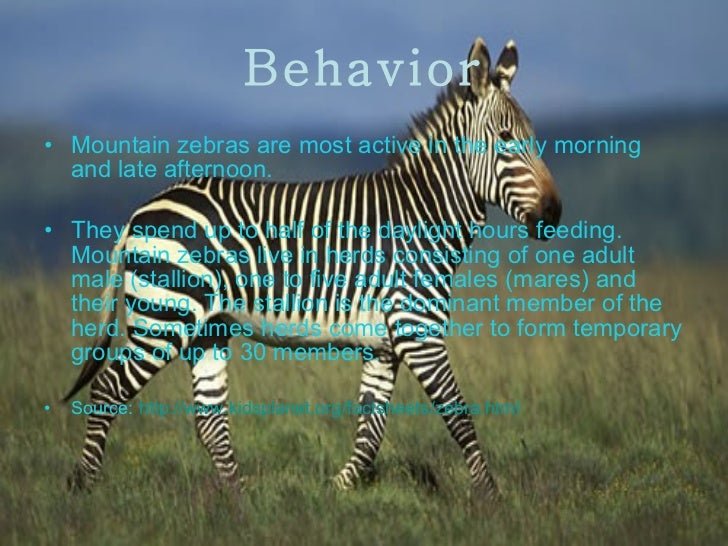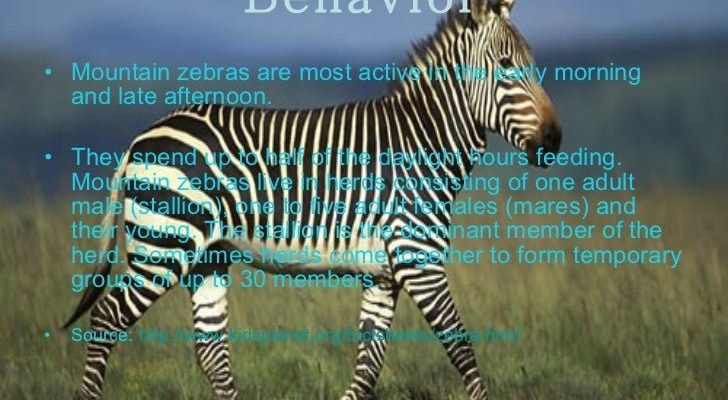
Mountain zebras, with their striking black-and-white stripes, are more than just beautiful creatures; they possess intriguing cognitive abilities. Understanding how smart these animals are can enrich our knowledge of wildlife behavior and ecology. So, grab a cup of coffee, and let’s dive into the fascinating world of mountain zebra intelligence.
Understanding Mountain Zebras
Mountain zebras, scientifically known as *Equus zebra*, are a unique species of zebra found primarily in the mountainous regions of southern Africa, especially in Namibia and parts of South Africa. Their distinct appearance sets them apart from other zebra species, featuring a more upright mane and a stockier build. But beyond their looks, these zebras have behaviors and cognitive skills that might surprise you.
You might be wondering what makes mountain zebras tick. Their social structures are quite complex, often forming groups called harems led by a dominant male. These groups consist of several females and their young. Living in such tight-knit communities requires communication and cooperation, which are both signs of intelligence.
Cognitive Abilities
So, how smart is a mountain zebra? Well, their intelligence manifests in different ways. For one, they exhibit problem-solving skills. When facing obstacles like predators or tough terrain, mountain zebras can assess the situation and make quick decisions to ensure their safety. This ability to think on their feet is crucial for survival.
Moreover, these zebras have remarkable spatial awareness. They can remember the locations of water sources and grazing areas within their territory. This skill is vital in the harsh landscapes they inhabit, where resources can be scarce. Imagine needing to remember the best paths to food or safety—that’s exactly what they do day in and day out.
Communication Skills
Mountain zebras are also proficient communicators. Their vocalizations, body language, and even their facial expressions convey important information to one another. When they feel threatened, they might emit a high-pitched whinny or snort to alert the rest of the group. This quick communication helps them coordinate their responses to danger.
Furthermore, their social interactions demonstrate advanced emotional intelligence. Zebras often groom each other, which strengthens social bonds and helps to maintain harmony within the group. This grooming behavior also serves as a way to relieve stress. Isn’t it interesting how social behavior can reflect intelligence in such a direct way?
Learning and Adaptability
Learning is another indicator of intelligence, and mountain zebras are no strangers to it. They are capable of learning from past experiences. For example, if a zebra encounters a specific predator and escapes, it’s likely to remember that lesson for future encounters. This sense of learning helps them become better at navigating their environment.
Adaptability plays a crucial role in their survival as well. Mountain zebras can adjust their grazing habits based on seasonal changes, moving to different terrains when resources are low. This flexibility is a sign of cognitive abilities that allow them to thrive in varying conditions. When faced with new challenges, they evaluate and modify their behaviors accordingly.
Comparison with Other Zebra Species
If you’re curious about how mountain zebras stack up against their relatives, it’s quite fascinating. For instance, plains zebras are more social and often form larger herds. While they are also intelligent, their social structure is less complex than that of mountain zebras. In contrast, Grevy’s zebras are known for their solitary behavior, which influences their cognitive skills.
Mountain zebras’ social structures require them to be more observant and engaged with their surroundings to ensure their community’s safety. This difference illustrates how environmental factors and social dynamics can shape intelligence in various species.
Conservation and Future Research
Understanding the cognitive abilities of mountain zebras is pivotal for their conservation. As habitats shrink and human encroachment increases, studies on their intelligence help inform conservation strategies. By recognizing their complex social needs and behavior, we can create better environments that support their survival.
Future research might focus on their adaptability and learning processes, helping us learn more about how intelligent animals navigate changing environments. The more we understand about mountain zebras, the more efficient conservation efforts can be.
The Role of Human Interaction
Human interaction can also impact the behavior and intelligence of mountain zebras. In protected environments or wildlife reserves, zebras may adapt to human presence differently than they would in the wild. For example, they might become more accustomed to humans, which can alter their natural behaviors. Understanding how these interactions affect their intelligence can shed light on how to manage their habitats effectively.
Moreover, educating the public about the cognitive abilities of mountain zebras can foster a greater appreciation for these incredible animals. This awareness can lead to stronger conservation efforts and support for protecting their natural habitats.
In conclusion, mountain zebras showcase a unique blend of intelligence, social interaction, and adaptability. They navigate their challenging environments with remarkable skill, which speaks to their cognitive abilities. As we continue to learn about these fascinating creatures, we gain insights not only into their lives but also into the broader ecosystem they inhabit. Understanding their smarts helps us appreciate the delicate balance of nature and the importance of preserving it.

